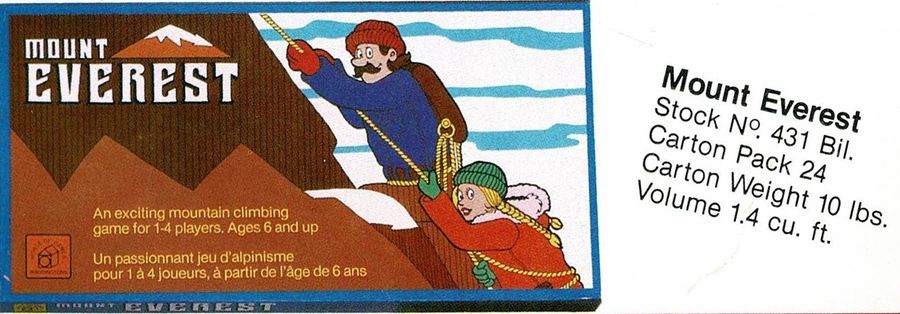Mount Everest (1980) Board Game
Mount Everest is a board game released in 1980 by Waddington Sanders Ltd. The game is designed for 1-4 players and falls under the categories of Abstract Strategy, Maze, and Sports. The objective of the game is to climb to the top of Mount Everest while facing various challenges and obstacles along the way.
Game Components of Mount Everest
How To Setup Mount Everest
To set up the game, players start by distributing the guides, climbers, and equipment among their player boards. Each player selects a hand of cards that will determine their movement and actions. The game board is prepared with the 3D mountain peak and the initial weather tokens are placed according to the game’s weather forecast mechanism.
Gameplay Mechanics and Game Objective
Player Experience
Playing Mount Everest can be a challenging and thematic experience, focusing on the hazards of climbing the highest mountain in the world. Players must balance the need to ascend quickly with the risks of adverse weather and limited resources. However, the game has been criticized for its luck-based mechanics and limited player interaction, which can make the game feel more like a solo endeavor against the mountain rather than a competitive or cooperative experience with other players.
Pros
Cons
Personal Thoughts on Mount Everest
Mount Everest is a game suited for players who enjoy strategic and thematic games, particularly those with an interest in adventure and mountaineering. However, it may not be the best fit for those seeking high levels of player interaction or games with less reliance on luck. The game’s unique mechanics and setting make it a compelling choice for those looking for a challenging solo or low-interaction experience.
We are supported by our audience. When you purchase through links on our site, we may earn an affiliate commission, at no extra cost for you. Learn more.

